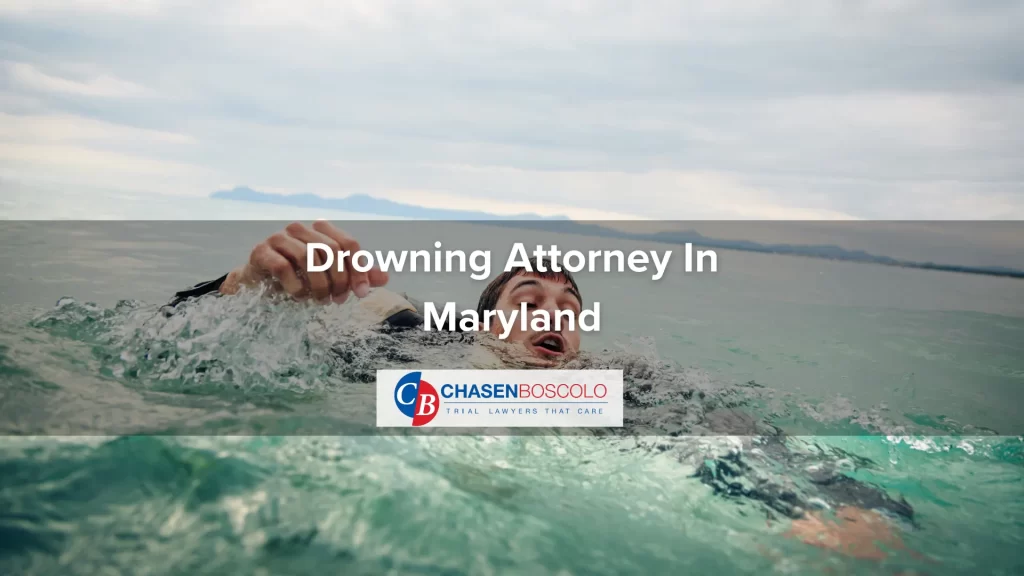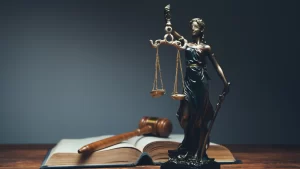
Maryland is not only located next to the Atlantic Ocean, but the state has many different lakes, rivers, and other “swimming holes,” as well as water parks. With the number of people in Maryland swimming regularly, unfortunately, accidents are bound to happen.
Drownings can occur suddenly and without warning, and the victims are frequently children. While many drownings end up being fatal, nonfatal drownings can result in serious lifelong injuries.
Did you sustain severe injuries or was your loved one killed in a drowning accident in Maryland? If so, our firm can launch an independent investigation so that key evidence in your case can be preserved. We will discuss all of your legal options when you call (301) 220-0050 or contact us online to set up a free consultation.
Do I Need a Drowning Lawyer?
Many drownings stem from the negligence of pool or business owners. In many cases, these parties are going to deny any negligence and claim that the drowning was beyond their control.
The insurance company for the negligent party may not immediately make this apparent, and an agent may instead act concerned and willing to help. Do not be fooled. Insurers all share the same goal of making money by not paying claims, and most everything you say to the insurance company can and will be used against you.
For this reason, you should never provide any recorded statement to a claims adjuster. You will want to have an attorney who can deal with the insurance company on your behalf.
Some insurance companies may immediately present you with an offer for a lump sum settlement to resolve your case, but such offers are almost always nowhere near what people are actually entitled to. A lawyer is going to know the true value of your case and will work hard to recover that amount.
Why Choose CHASENBOSCOLO To Handle My Case?
CHASENBOSCOLO is available 24 hours a day, seven days a week. Our clients have been our top priority since our founding in 1986.
Barry M. Chasen and Benjamin T. Boscolo each have over three decades of legal experience. Both attorneys have received an AV Preeminent rating from Martindale-Hubbell, a peer rating denoting the highest level of professional excellence.
Mr. Chasen and Mr. Boscolo are both members of the Maryland Association for Justice, American Association for Justice, and Maryland State Bar Section Council on Negligence, Insurance, and Workers’ Compensation. CHASENBOSCOLO has been helping clients all over Maryland since 1986.
We also provide the No Fee Guarantee® so you do not worry about paying any legal fees unless you recover a financial award. Our firm will negotiate a fair and full settlement to your case or file a lawsuit when an insurance company refuses to provide appropriate compensation.
Types Of Drowning Cases We Handle
 Drowning can occur in all kinds of bodies of water in Maryland. Some accidents occur at public pools, while others occur in private pools. Drownings are also common in many other swimming holes around the state.
Drowning can occur in all kinds of bodies of water in Maryland. Some accidents occur at public pools, while others occur in private pools. Drownings are also common in many other swimming holes around the state.
Some of the more popular swimming areas in Maryland include, but are not limited to:
- Beaver Dam (Cockeysville)
- Betterton Beach (Betterton)
- Camp Harding Park (Big Pool)
- Cascade Lake (Hampstead)
- Cunningham Falls State Park (Thurmont)
- Deep Creek Lake (McHenry)
- Elk Neck State Park (North East)
- Ferry Park (Rock Hall)
- Frontier Town (Berlin)
- Greenbrier State Park (Boonsboro)
- Green Ridge State Forest (Flintstone)
- Hammerman Area at Gunpowder Falls State Park (Middle River)
- Hart-Miller Island (Essex)
- Hillbilly Creek at Gunpowder Falls State Park (Middle River)
- Kilgore Falls (Pylesville)
- Lake Habeeb (Flintstone)
- Loch Raven Reservoir (Timonium)
- Meadowside (Rockville)
- Patapsco Valley State Park (Ellicott City)
- Sandy Point State Park (Annapolis)
- Seneca Creek (Poolesville)
- Terrapin Beach Park (Stevensville)
When a person drowns, numerous parties could be at fault. Liability in these cases is not always easy to determine or prove. An attorney can help you identify all the liable parties.
Some of the applicable claims for drowning cases can include:
- Premises Liability — A property owner failed to provide a safe space.
- Negligence — A property owner’s failure to provide lifeguards or a caretaker’s failure to watch a child.
- Attractive Nuisance — A property owner’s failure to safeguard a swimming area from access by children.
The possible liable parties in these cases can vary, with property owners being some of the most common defendants in such cases. Other possible liable parties can include hotels, neighborhood associations, or babysitters. Some of the most common causes of drownings include, but are not limited to:
- Lack of supervision
- Lack of maintenance
- Lack of water clarity
- Inadequate warning signs
- Inadequate lifesaving equipment
- Untrained lifeguards
- Overcrowded areas
- Broken or missing emergency equipment
- Defective equipment
- Failure to install barriers
- Negligent watercraft operation
- Falling through thin ice
- Alcohol consumption
- Medical emergencies while in the water
Drownings are frequently fatal, but even those who survive nonfatal drownings can still suffer catastrophic injuries. Some victims may suffer traumatic brain injuries (TBIs) that can require extensive care.
Frequently Asked Questions About Drownings
At CHASENBOSCOLO, we get a lot of questions from clients regarding drownings, swimming pools, and equipment. Below are a few of the most commonly asked questions. If you have questions about your particular case, please reach out to our compassionate and experienced Maryland drowning attorneys by calling (301) 220-0050.
What is the difference between a life jacket and a personal floatation device (PFD)?
The main difference between a life jacket and PFD is that a life jacket is designed to turn an unconscious person so they are face-up in the water, while a PFD keeps a person afloat but not necessarily face up. Life jackets or PFDs are both suitable for children, but adults should still keep an eye on children and make sure their life jackets or PFDs fit them properly.
What kind of safety equipment do I need for my pool?
While different counties and municipalities in Maryland have different requirements for pool fences, most require safety barriers around any man-made bodies of water more than 24 inches deep. Many jurisdictions have adopted the United States Consumer Product Safety Commission’s (CPSC) “Guidelines for Swimming Pool Barriers,” which provides that pool fences be 48 inches tall, pickets be spaced no more than 4 inches apart, fences with horizontal members less than 45 inches apart have such horizontal members located on the pool side of the fence, and all access gates being self-closing, self-latching, and equipped with locking devices.
Above-ground pools taller than 48 inches do not require fencing as long as the ladders are detachable, and above-ground pools less than four feet tall need barriers installed to bring the pool walls to the appropriate height. Again, certain areas have different requirements. Montgomery County requires five-foot tall fences to surround any body of water at least 18 inches deep instead of the more common 24-inch depth, and Prince George’s County requires pool fences to be at least six feet tall.
What are dry drowning and secondary drowning?
These phrases are not official terms, but dry drowning involves a person breathing in small amounts of water during a struggle that makes muscles in their airways spasm and causes tremendous difficulty breathing. Secondary drowning involves a fluid build-up in the lungs called pulmonary edema, which can cause shortness of breath, lightheadedness, and other breathing problems. Dry drowning and secondary drowning are not especially common, but a person should always seek medical attention when they believe they are suffering either.
Drowning Statistics
The Maryland Department of Health reported that 64 drowning-related deaths occurred in 2012 and 18.75% of those deaths were among people between 55 and 64 years of age. Drowning was the second-leading cause of death for children 0 to 4 years of age in 2012, and the third-leading cause of death for children 5 to 14 years of age.
According to the Centers for Disease Control and Prevention (CDC), there was an average of 3,536 fatal unintentional drownings (non-boating related) annually in the United States from 2005 to 2014, or roughly 10 deaths per day. Boating-related incidents resulted in an additional 332 deaths each year.
The CDC reported that about one in five people who die from drowning are children 14 and younger, and five children receive emergency department care for nonfatal submersion injuries for every one child who dies from drowning. Over 50% of drowning victims treated in emergency departments require hospitalization or transfer for further care, and nonfatal drowning injuries cause severe brain damage that can result in long-term disabilities.
Drowning is the leading cause of unintentional death for children between 1 and 4 years of age, according to the CDC. Of drowning deaths, 77% are children less than 5 years of age.
Contact a Drowning Injury Attorney In Maryland
If you suffered serious injuries or your loved one was killed in a drowning accident in Maryland, you might be very confused about who is responsible for your injuries. It is critical that you retain legal counsel as soon as you can.
CHASENBOSCOLO can fight to make sure that you recover all of the compensation you need and deserve. Call (855) 752-9146 or contact our Maryland personal injury lawyers online to take advantage of a free consultation.





